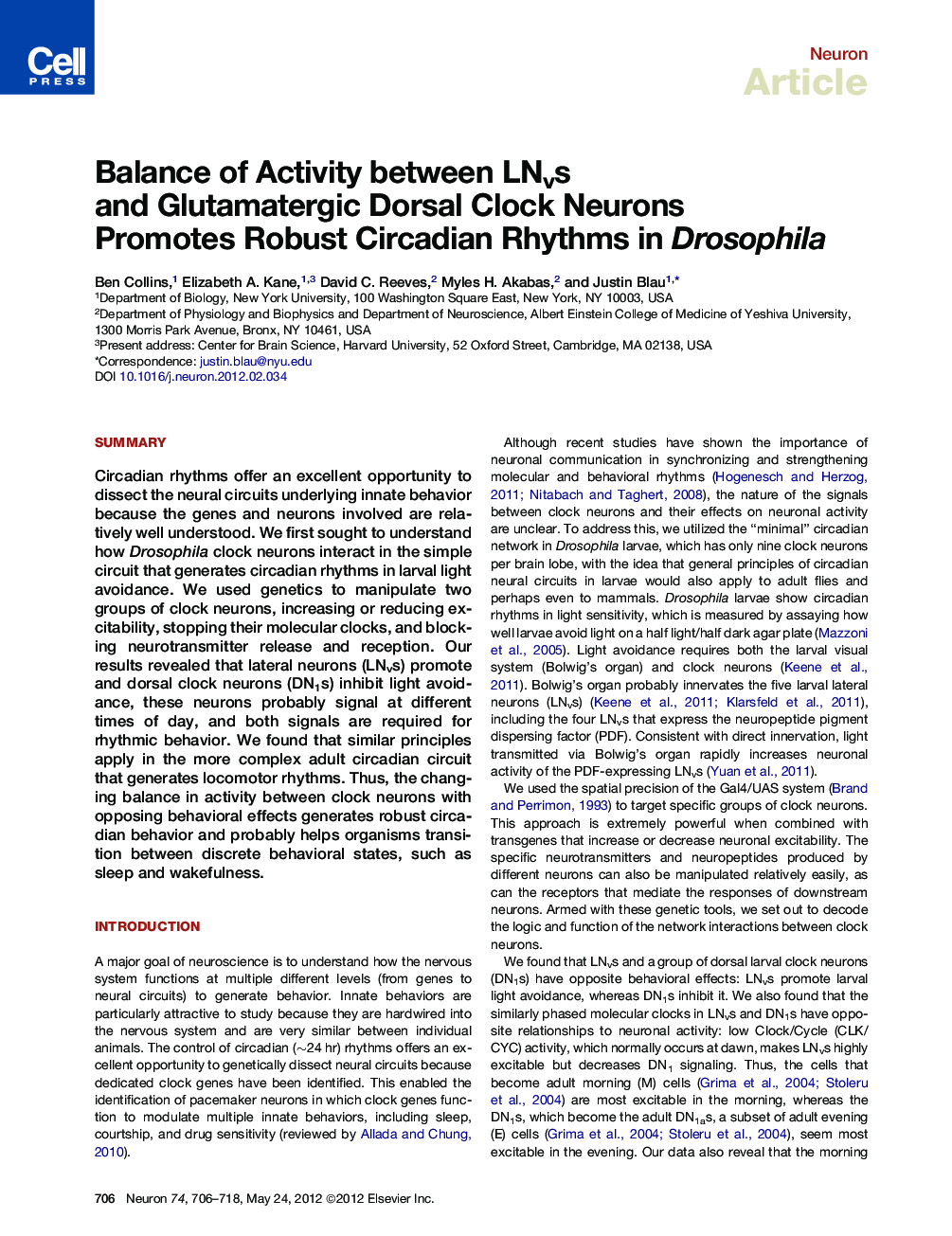| Article ID | Journal | Published Year | Pages | File Type |
|---|---|---|---|---|
| 4321807 | Neuron | 2012 | 13 Pages |
SummaryCircadian rhythms offer an excellent opportunity to dissect the neural circuits underlying innate behavior because the genes and neurons involved are relatively well understood. We first sought to understand how Drosophila clock neurons interact in the simple circuit that generates circadian rhythms in larval light avoidance. We used genetics to manipulate two groups of clock neurons, increasing or reducing excitability, stopping their molecular clocks, and blocking neurotransmitter release and reception. Our results revealed that lateral neurons (LNvs) promote and dorsal clock neurons (DN1s) inhibit light avoidance, these neurons probably signal at different times of day, and both signals are required for rhythmic behavior. We found that similar principles apply in the more complex adult circadian circuit that generates locomotor rhythms. Thus, the changing balance in activity between clock neurons with opposing behavioral effects generates robust circadian behavior and probably helps organisms transition between discrete behavioral states, such as sleep and wakefulness.
► LNv and DN1 clock neurons have opposite effects on light avoidance ► LNvs and DN1s likely signal at opposite times of day despite similarly phased clocks ► Larval rhythms need inhibitory glutamatergic DN1 signals that gate LNv activity ► Non-LNv signals are also required for circadian locomotor activity rhythms in adults
